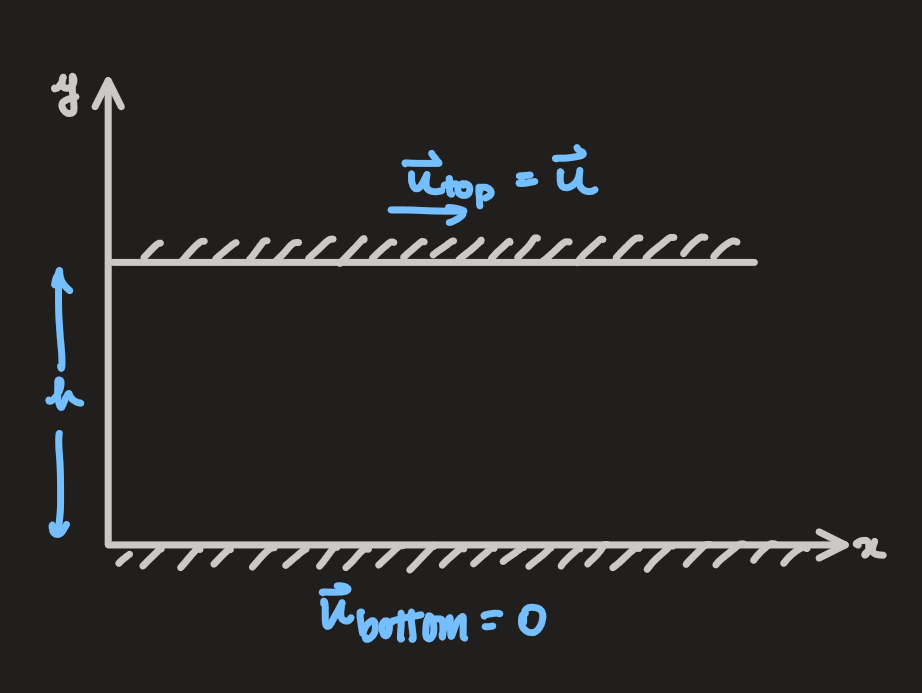PX285 - H4 - newton's law of viscosity
- considering a flow between two parallel plates, where the upper plate is moving at a constant velocity,
, and the bottom plate is stationary

- considering a 1D case of a laminar flow, so
, and - when steady motion is obtained, ie. no dependence on time, so,
- a constant force is needed to maintain the flow
where,
- therefore, the force is given by:
where,
-
for air at
C, Pa s -
for water at
C, -
in the neighbourhood of the moving plate,
, the fluid acquires a certain amount of mechanical momentum -
this momentum is transferred trough flow in the direction perpendicular to
, in y-direction -
this is the effect of viscosity, ie. internal friction in the fluid
-
forces that should be considered in fluid mechanics:
- viscous force
- gravity
- negative gradient of pressure
- coriolis force
- lorentz force, for electrically conductive fluids
-
if viscosity does not depend on speed, such fluids are known as newtonian fluids
- eg: air, water, plasmas
-
if viscosity does depend on speed, such fluids are known as non-newtonian fluids
- eg: oil, blood, emulsions
-
only newtonian fluids are discussed in this module